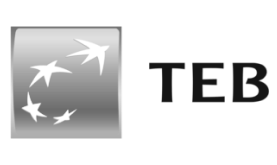Secure Your Web Application and APIs with Medianova WAF, No Performance Compromises
Elevate the security, performance, and availability of your websites and apps. Maximize your user experiences.

Medianova WAF
Your Cloud-Based Shield for Modern Security
Managed Rulesets & Custom Rules
Command your WAF defenses through managed rulesets and customized rules to mitigate specific threat scenarios, ensuring precise protection and prevention of false-positives.
Distributed Network & Scalability
Leverage our globally distributed server network across multiple locations for superior scalability and robust defense against diverse threats. Intercept and block threats at the edge.
Fast Deployment & Seamless Control
Configure your WAF effortlessly in a few clicks – no deployment complexities or added service costs. Streamline management through a singular control panel for hassle-free oversight.
How Medianova WAF works
Protect your web assets from sophisticated attacks listed in the “OWASP Top 10 Security Risks”
- SQL Injection (SQLi)
- Cross-Site Scripting (XSS)
- Local File Inclusion (LFI)
- Remote File Inclusion (RFI)
- PHP Code Injection
- Java Code Injection
- Shellshock
- Unix/Windows Shell Injection and more.

Why Medianova WAF ?
DDoS Mitigation
Detect and effectively block Distributed Denial of Service (DDoS) attacks on our Anycast DNS-based edge network.
Advanced Rate Limiting
Prevent abuse, DDoS attacks, brute force attempts targeting your Apps or APIs with our advanced rate limiting mechanism.
Fast Deployment & Seamless Control
Block or allow malicious traffic from specific geographies or IP addresses in case of an attack, with a simple rule.
Monitoring-Only Mode
Enhance your security posture without disrupting your workflow with “Monitoring-only WAF Operation” mode.
Continuous Ruleset Update
Maintain effective protection against emerging attacks with ongoing updates and access to the most recent threat intelligence.
SSL/TLS Encryption
Elevate productivity with TLS 1.3, reducing latency and reinforcing cipher strength for enhanced security.
Reduced Costs
Sidestep expensive hardware investments and cut down your overall costs with our zero CAPEX approach.
Dedicated Support
Get in touch with our premium support engineers proactive and available 24/7 through private Slack channels.
Rich Analytics
Monitor the security of your website with detailed threat statistics and activity logs.
Customers secured by Medianova WAF

Yeni Şafak experienced a seamless attack mitigation without any downtime or performance loss on origin servers, guaranteeing uninterrupted service for users. Their website performance transformed significantly, as validated by Catchpoint data: time to first byte reduced by 74%; average load time by 91%; and response time by 76%.
0 M+
attacks blocked in minutes
Powering industry-leading enterprises








Ready to rest easy, knowing your digital assets are fortified with the resilience required by today’s threat landscape?
Let us guide you.



